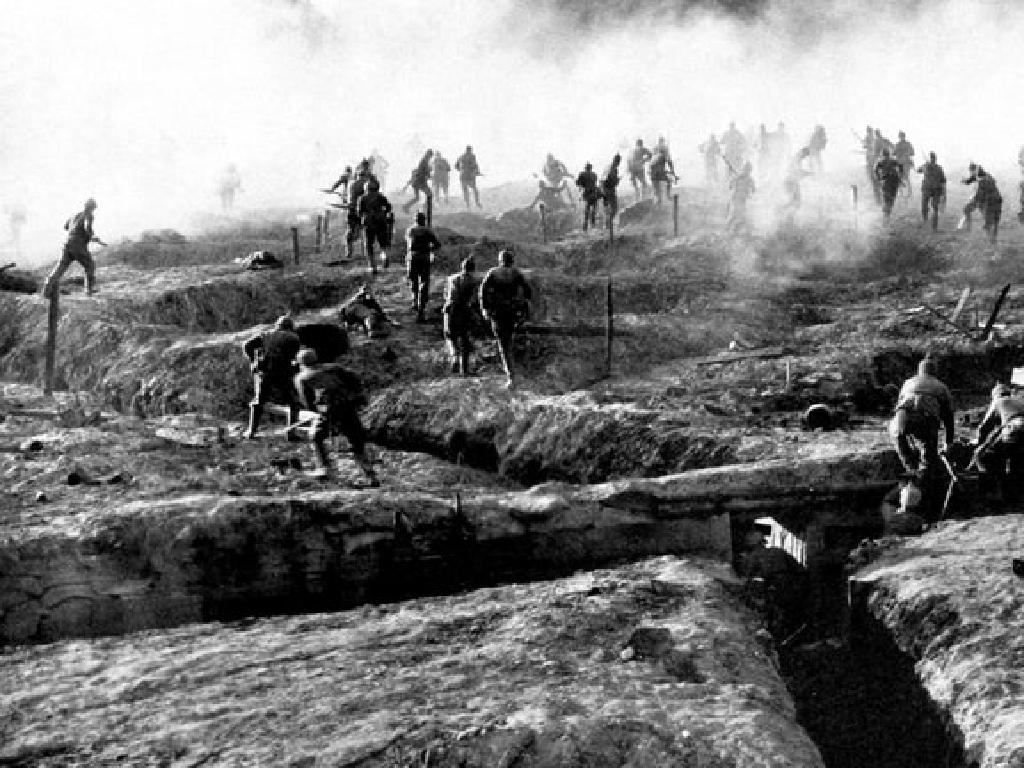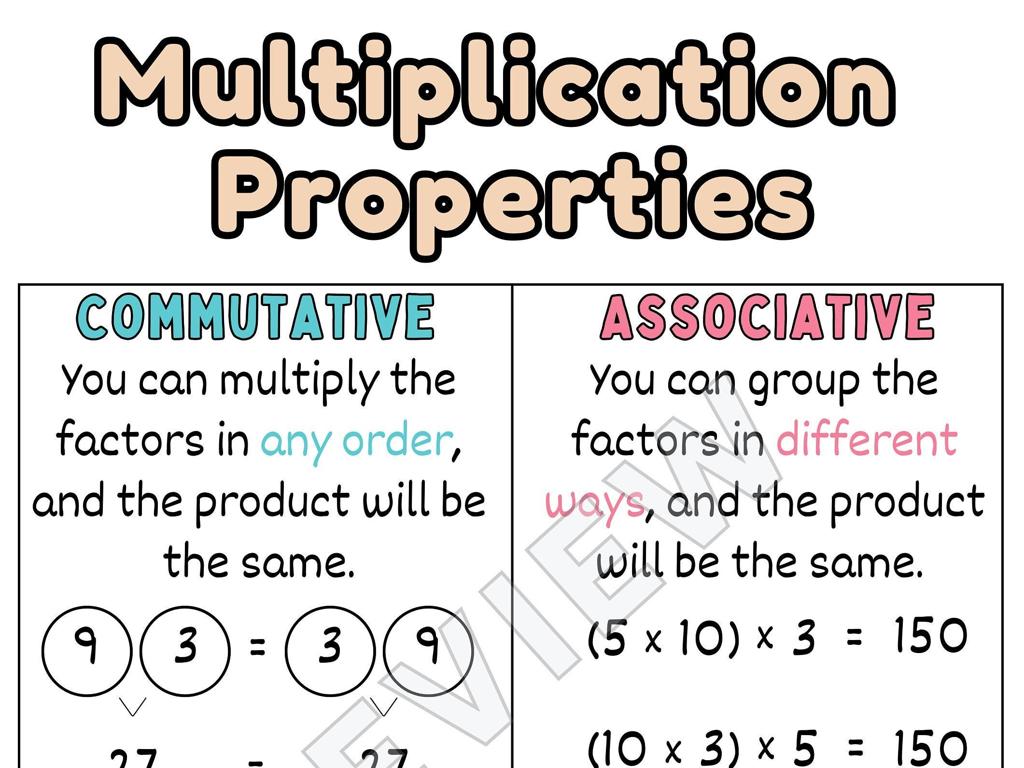Multiply Three Or More Fractions And Whole Numbers
Subject: Math
Grade: Sixth grade
Topic: Multiply Fractions
Please LOG IN to download the presentation. Access is available to registered users only.
View More Content
Multiplying Fractions and Whole Numbers
– Basics of multiplication
– Multiplying fractions step-by-step
– Multiply numerators across, then denominators
– Multiplying with whole numbers
– Convert whole numbers to fractions by using 1 as the denominator
– Real-life applications
– Use in cooking, crafting, and budgeting
|
Begin with a review of the basic principles of multiplication, emphasizing that it’s a method of repeated addition. Explain the process of multiplying fractions by multiplying the numerators together to get the new numerator, and the denominators together to get the new denominator. When introducing multiplication with whole numbers, show how to convert the whole number to a fraction by using 1 as the denominator before multiplying. Highlight the importance of this skill in real-life scenarios such as doubling a recipe (cooking), dividing a piece of wood into equal parts (crafting), or splitting a budget into portions (budgeting). This will help students understand the practicality of what they’re learning. Encourage students to practice with examples and prepare for interactive activities in the following classes.
Review: Multiplying Two Fractions
– Recap: Multiplying two fractions
– Multiply numerators together, then denominators
– Example: Multiply 1/2 by 1/3
– 1/2 x 1/3 = 1/6 (1×1 over 2×3)
– Visualize fraction multiplication
– Use area models or number lines to show process
|
Begin with a brief review of the steps to multiply two fractions, reinforcing the concept that we multiply the numerators (top numbers) and then the denominators (bottom numbers). Provide a clear example, such as 1/2 multiplied by 1/3, and solve it step by step. Emphasize the importance of understanding the visual representation of this process, which can be demonstrated through area models or number lines. This foundational understanding will be crucial as students progress to multiplying three or more fractions and whole numbers. Encourage students to visualize the fractions as parts of a whole to better grasp the concept of multiplication in this context.
Multiplying Fractions with Whole Numbers
– Convert whole numbers to fractions
– Treat the whole number as a fraction over 1
– Example: Multiply 2 by 3/4
– 2 becomes 2/1, so 2/1 x 3/4 equals 6/4 or 1 1/2
– Use area models for illustration
– Visualize multiplication as combining areas
– Practice with different examples
|
This slide introduces the concept of multiplying fractions with whole numbers. Start by converting the whole number into a fraction by placing it over 1. This simplifies the process as it turns into a fraction multiplication problem. For example, multiplying 2 by 3/4, convert 2 to 2/1 and then multiply across to get 6/4, which simplifies to 1 1/2. Use area models to visually represent the multiplication process, which helps students grasp the concept of combining parts of a whole. Encourage students to practice with different numbers to become comfortable with the process. Provide additional examples and ensure to clarify any misconceptions about the multiplication of fractions and whole numbers.
Multiplying Three Fractions
– Step-by-step fraction multiplication
– Multiply numerators, then denominators
– Example: Multiply 1/2, 1/3, 1/4
– 1/2 x 1/3 x 1/4 = 1/24
– Find the cumulative product
– Product grows smaller with each fraction
– Simplify the final fraction
– Reduce 1/24 to simplest form if needed
|
This slide introduces students to the process of multiplying three fractions. Start by explaining that to multiply fractions, we multiply the numerators (top numbers) together and then the denominators (bottom numbers) together. Use the example 1/2 x 1/3 x 1/4 to show this process step by step. Emphasize that as we multiply more fractions, the product becomes smaller because we are essentially taking a part of a part of a part. Finally, remind students that the resulting fraction should be simplified to its lowest terms if possible. Encourage students to practice with additional examples and ensure they understand each step before moving on.
Multiplying Multiple Fractions
– Process for multiplying fractions
– Multiply the numerators, then the denominators
– Example: 1/2 x 2/3 x 3/4 x 4/5
– 1/2 x 2/3 x 3/4 x 4/5 = 1/5 (after simplification)
– Tips for tracking multiplication
– Write each step or use a grid to organize
– Simplify before multiplying
– Cancel out common factors between numerators and denominators before multiplying
|
When teaching students to multiply more than two fractions, start by explaining the process: multiply all the numerators together to get the new numerator, and all the denominators to get the new denominator. Use the example on the slide to demonstrate this process step by step. Emphasize the importance of keeping work organized, perhaps by writing each step or using a grid. Encourage simplifying fractions before multiplying to make calculations easier. For instance, in the example, show how 2 in the second fraction and 4 in the fourth fraction can be simplified to 1 before multiplying. This will result in a simpler product that can be more easily reduced to the lowest terms, in this case, 1/5.
Multiplying Fractions with Whole Numbers
– Combine fractions and whole numbers
– Example: 3 x 1/2 x 2/3
– Multiply 3 by 1/2 to get 3/2, then multiply 3/2 by 2/3
– Use visual aids for clarity
– Drawings, fraction circles, or area models
– Practice with different examples
– Try multiplying 4 x 3/4 x 1/5 or 2 x 5/6 x 1/2
|
This slide introduces the concept of multiplying fractions with whole numbers, a key skill in understanding how to work with fractions in various mathematical contexts. Start by explaining the process step by step, using the example provided. Visual aids like fraction circles or area models can be extremely helpful in illustrating how the multiplication of fractions and whole numbers works. Encourage students to visualize the fractions being multiplied as parts of a whole, which can be combined with whole numbers. After the example, give students a chance to practice with different numbers to solidify their understanding. The goal is for students to become comfortable with the process and to recognize patterns in multiplying fractions and whole numbers.
Multiplying Fractions: Practice Problems
– Multiply whole numbers by fractions
– Example 1: 4 x 1/2 x 1/5
– Simplify 4 x 1/2 to get 2, then 2 x 1/5 equals 2/5
– Example 2: 1/3 x 1/4 x 1/5 x 6
– Multiply fractions first, then by the whole number: (1/3 x 1/4 x 1/5) x 6
– Steps for multiplying fractions
– Multiply numerators across, then denominators, and simplify if needed
|
This slide is designed to provide students with practice problems for multiplying fractions with whole numbers. Start by explaining the process of multiplying a whole number by a fraction, then proceed with the examples. For Example 1, demonstrate how to simplify the multiplication step by step, starting with the whole number and one fraction, and then multiplying the result by the next fraction. For Example 2, show the importance of handling the fraction multiplication first before multiplying by the whole number. Emphasize the steps for multiplying fractions: multiply the numerators together to get the new numerator, multiply the denominators to get the new denominator, and then simplify the fraction if possible. Encourage students to work through these examples and similar problems to build their confidence and understanding of the concept.
Class Activity: Fraction Multiplication Relay
– Split into teams for the relay
– Each member solves a fraction step
– Work together to find the product
– Race to get the correct answer first!
|
This activity is designed to encourage teamwork and understanding of multiplying fractions and whole numbers. Divide the class into small groups, and give each team a multi-step multiplication problem involving three or more fractions and whole numbers. Each member is responsible for one part of the problem, and they must work in sequence. The first team to arrive at the correct final product wins. Make sure to prepare different sets of problems for each team to prevent copying. Possible variations of the activity could include a mix of proper and improper fractions, use of whole numbers, and inclusion of mixed numbers to challenge students’ understanding. The goal is to reinforce the concept of fraction multiplication in a fun, collaborative way.
Wrapping Up: Multiplication of Fractions
– Review of fraction multiplication
– Practice makes perfect
– Homework: Multiplication worksheet
– Complete problems multiplying fractions and whole numbers
– Tips for successful homework
– Read each question carefully, and simplify your answers
|
As we conclude today’s lesson on multiplying fractions and whole numbers, remind students of the key steps we’ve learned. Emphasize the importance of practice to master these concepts. For homework, students are assigned a worksheet that includes a variety of problems to reinforce their skills. Encourage them to approach each problem methodically, ensuring they understand how to multiply across numerators and denominators and simplify their answers where possible. Remind them to read each question carefully and to check their work for accuracy. This practice will help solidify their understanding and prepare them for more complex math problems in the future.






